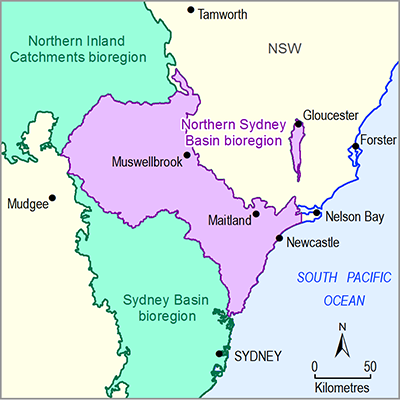Findings from bioregional assessments can help governments, industry and the community provide better-informed regulatory, water management and planning decisions.
Assessment results flag where future efforts of regulators and proponents can be directed, and where further attention is not necessary. This is achieved through the rule-out process, which directs focus onto areas where hydrological changes are predicted. This process has identified areas, and consequently water resources and water-dependent assets, that are very unlikely to experience hydrological change or impact due to additional coal resource development.
This assessment predicted the likelihood of exceeding levels of potential hydrological change at a regional scale. It also provides important context to identify potential issues that may need to be addressed in local-scale environmental impact assessments of new coal resource developments. It should help project proponents to meet legislative requirements to describe the environmental values that may be affected by coal resource development, and to adopt strategies to avoid, mitigate or manage the predicted impacts. These assessments do not investigate the social, financial or human health impacts of coal resource development, nor do they consider risks of fugitive gases and non-water-related impacts.
Bioregional assessments are not a substitute for careful assessment of proposed coal mine or coal seam gas extraction projects under Australian or state environmental law. Such assessments may use finer-scale groundwater and surface water models and consider impacts on matters other than water resources. However, the Independent Expert Scientific Committee on Coal Seam Gas and Large Coal Mining Development (a federal government statutory authority established in 2012 under the Commonwealth’s Environment Protection and Biodiversity Conservation Act 1999) can use these assessment results to formulate their advice.
The full suite of information, including information for individual assets, is provided at www.bioregionalassessments.gov.au. Access to underpinning datasets, including geographic data and modelling results, can assist decision makers at all levels to review the work undertaken to date; to explore the results using different thresholds; and to extend or update the assessment if new models or data become available. Additional guidance about how to apply the Programme’s methodology is also documented in 11 detailed scientific submethodologies (as listed in ‘References and further reading’).
The Programme’s rigorous commitment to data access is consistent with the Australian Government’s principles of providing publicly accessible, transparent and responsibly managed public sector information.

Product Finalisation date
- Executive summary
- Explore this assessment
- About the subregion
- How could coal resource development result in hydrological changes?
- What are the potential hydrological changes?
- What are the potential impacts of additional coal resource development on ecosystems?
- What are the potential impacts of additional coal resource development on water-dependent assets?
- How to use this assessment
- Building on this assessment
- References and further reading
- Datasets
- Contributors to the Technical Programme
- Acknowledgements
- Citation
